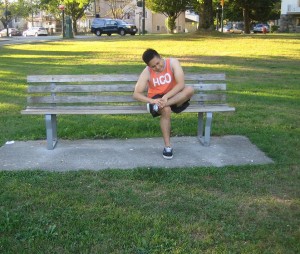An ankle sprain involves damage to one or several ankle ligaments, usually on the exterior of the ankle. In the ankle joint, these ligaments provide stability by allowing sideway movements.
In some cases of sprains, they are relatively worse. The seriousness of an ankle sprain is based on the whether the ligament was stretched, partly or fully ripped as well as the number of ligaments affected.
What are the causes?
An ankle sprain is often due to a fall, direct blow or abrupt twisting that drives the ankle joint out of normal alignment. The sprains typically occur while engaging in sports, using incorrect footwear or walking or running on uneven terrain.

Oftentimes, a sprain is likely to occur since an individual is born with weak ankles. Having a history of foot or ankle injuries can also lead to the weakening of the ankle which result to sprains.
Indications
The indications of an ankle sprain generally include:
- Swelling
- Ankle pain or soreness
- Difficulty walking
- Bruising
- Stiffness or rigidity in the joint
Conservative measures for an ankle sprain
If an individual has an ankle sprain, rehabilitation is vital and starts once treatment begins. The doctor might suggest one or several of these options:
- Keep the affected ankle rested since walking can worsen the injury.
- Apply an ice pack on the site of the injury at 20 minutes at a time.
- Use an elastic wrap to apply compression to ease the swelling
- Elevate the joint slightly above the level of the heart to alleviate the swelling
- Medications such as non-steroidal anti-inflammatory drugs (NSAIDs) are given to reduce the inflammation and pain. In some cases, prescription variants are given to provide adequate relief.
- Physical therapy aims on promoting healing and improving the range of motion.
Quick Note / Disclaimer
The material posted on this page on an ankle sprain is for learning and educational purposes only. To learn to recognize and manage sprains on the ankle, register for a first aid and CPR course with Saskatoon First Aid.
